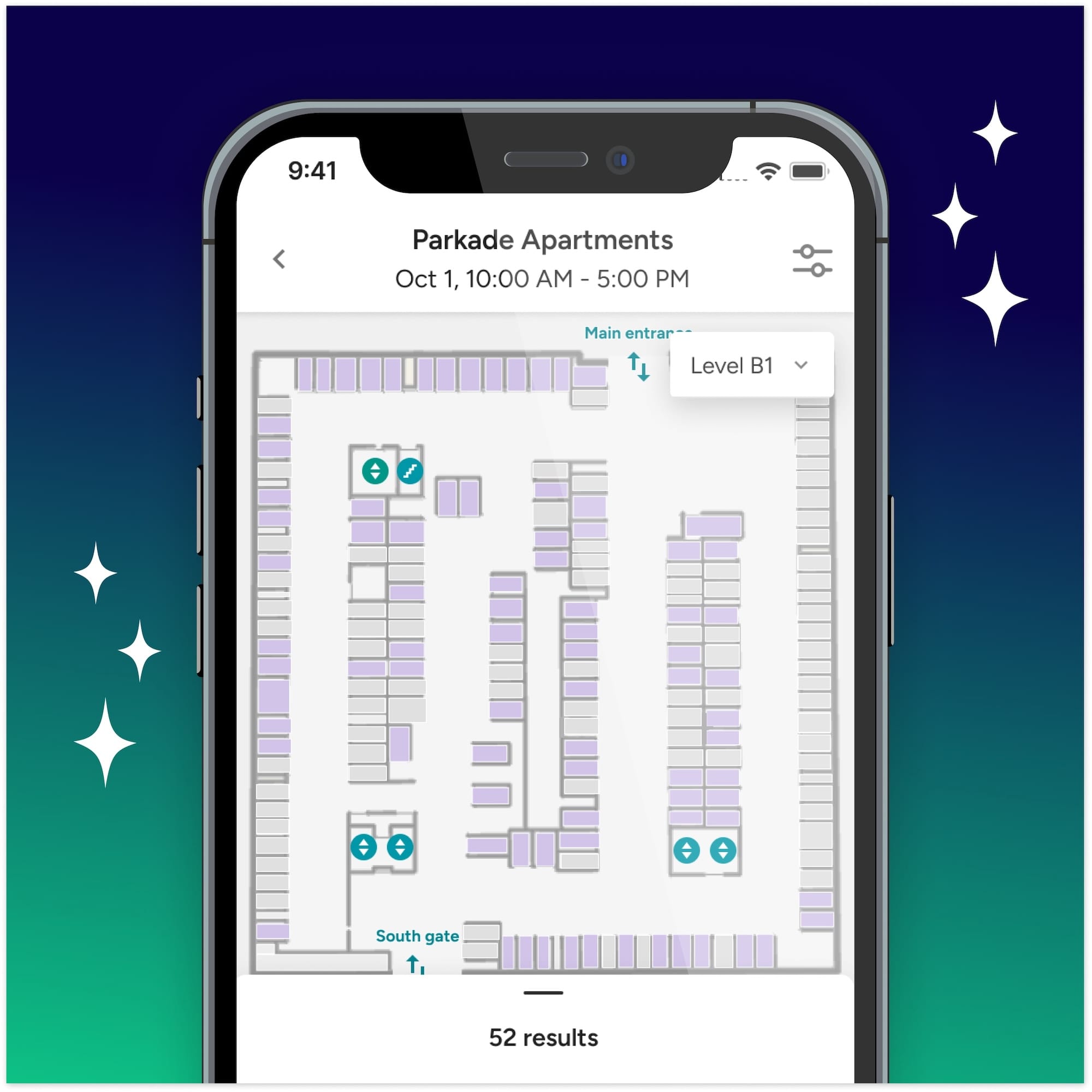

TABLE OF CONTENTS
Single-family homeowners who drive EVs can install a charger in their garage and recharge their vehicle whenever it is convenient for them. However, charging at home can be much trickier if you live in a larger, shared condo building.
Many Condo and apartment dwellers park their vehicles in a common area, such as an underground parking garage. You must appeal to an HOA to get approval for installing an EV charger, and often the HOA must be the one to arrange and pay for the installation. Even if you own a parking spot, most residents don’t own the property’s electrical infrastructure. The challenging part here is persuading the association to see the EV charging station’s benefits for both current and future homeowners.
Here at Parkade, we prepared five simple tips that will help you persuade your HOA to say “yes!” to adding EV charging.
Have you noticed any other residents driving an EV?
It’s quite likely that they would also be interested in adding an EV charger to your building. There might also be a few families considering getting an electric car, but they find the lack of chargers inconvenient. Make sure to survey other residents in your building and see their standpoint regarding EV chargers.
You could even just walk the garage and leave notes on the windshield of any electric vehicles parked in the garage.
It is easier to get your HOA to approve an EV charging spot when several families show interest. If you notice that there isn’t a great demand for on-site charging in your building, then you can suggest investing in a shared community charger.
EV charging is also becoming a must-have for many buyers, so communicate to your HOA that not having enough EV infrastructure is dragging down their home values. That can really help to get their attention.
Prior to installing an EV charger, you must notify your HOA.
The good news is that some states and provinces have passed the “Right to Charge” law, making it hard for an HOA or condo board to reject a resident’s request to install an EV charging station.
If you live in California, Colorado, Florida, Ontario, or Oregon, your HOA doesn’t have the right to deny your request for an EV charger if you meet certain conditions (e.g., you assume responsibility for all associated costs).
California’s law (CCC 4745) is a good example, which says that HOAs can’t prohibit or restrict the installation or use of an EV charger. For non-California residents, search for similar laws in your city or state.
It’s usually necessary to run wiring along common walls from a shared electrical panel when installing an EV charger.
Your HOA may require you to put in a formal request to your architectural committee. They may even ask you to form a committee to research and recommend how to implement EV charging. Your conversation will be much more fruitful if you develop a simple, cost-effective plan in advance.
If it seems to you that your HOA is not up for adding individual charging spots, feel free to recommend a community EV charger (or bank of chargers) that all residents can share. While this is not an ideal solution, it can be a first step towards convincing the association to permit assigned EV chargers.
Your HOA is quite likely to accept this proposal as a shared charger is an amenity that benefits the entire community and can even increase the property’s value.
Parkade is an app that can improve the EV charging experience in your building.
If you get a permission to install an EV charger in your assigned spot, you can share it with other residents when it is not in use. Also, Parkade allows you to charge other users a small fee. This way, you will be able to recoup the cost of the charger, and other residents will get a hassle-free charging experience.
If your HOA decides that getting a community EV charger is a better idea, Parkade can help out with those too. Using the app to price communal EV parking spots will allow the building to pay off the charger’s cost. This would also make the spots reservable in advance by tenants. As a result, your building would be able to offer EV owners a reliable EV charging experience.
As already mentioned, you should come up with an EV charging plan before speaking to your HOA. Anticipate what might make your HOA hesitate and come up with a plan that will provide a resolution to all these concerns. In general, most HOAs have a problem with the cost and scalability of EV chargers.
If you want to put in an EV charger in your deeded parking spot, then you will generally be the one paying for the installation and electricity used.
The good news is that by installing an EV charger, you will add more value to your property and make it more attractive for potential buyers in the future. Besides, Parkade can also help you recoup the cost by allowing you to share your parking spot (for a small fee) with other residents when you’re not using it.
Once you explain to your HOA that you’ll pay the costs of install, they will be more likely to accept your proposal.
When other residents see your EV charger, they may also want to get one. However, your building’s electrical capacity might not be capable of handling the installation of many EV chargers.
If this is one of the concerns your HOA expresses, you can recommend the following solutions:

We’re thrilled to announce one of our most significant leaps forward this year: the launch of dynamic maps across our mobile and web applications.
Read Story
Now that AB 1317 is official, it’s time to brush up on the requirements and see how your properties stand to benefit.
Read Story
For multi-family communities still offering first-come, first-served parking for residents, Southwest's decision may shed some light on why it's time for a switch.
Read Story